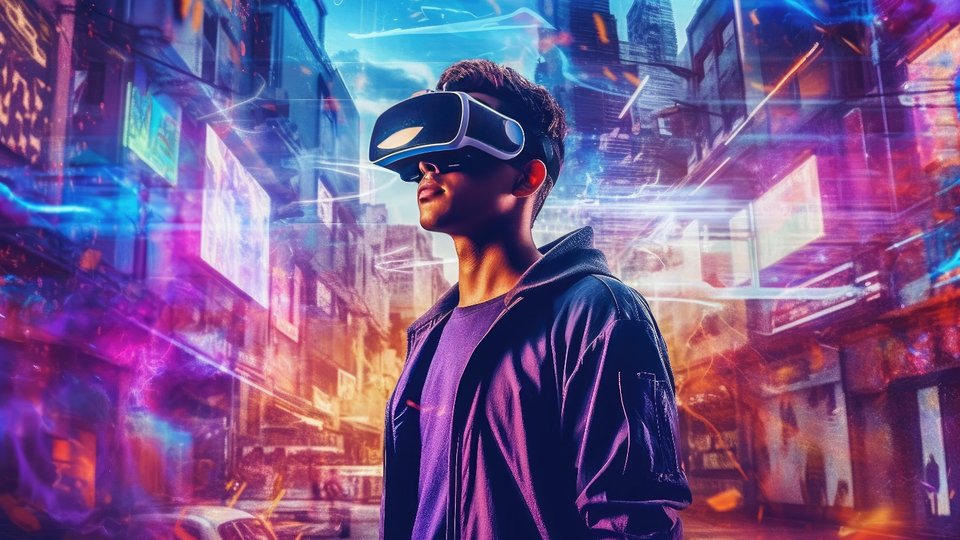Commentary
Arms race in VR adoption continues
The arms race in VR adoption has taken a serious hit, and much depended on the successful release of the Meta Quest 3. Camera based tracking elements have entered the fray.

September 17, 2023 by Kevin Williams
Free roaming VR experiences have grown in popularity with the move from the encumbrance of backpack PCs and difficult tracking systems. The latest camera-based tracking elements show how far things have advanced.
Dreamscape — the global VR experience provider known for its location based entertainment VR operation — has partnered with Vicon, a U.K. creator of motion capture technology, to introduce a location-based virtual reality adventure called "The Clockwork Forest." It was developed for Audemars Piguet, the Swiss luxury watch manufacturer, as a marketing experience.
For Dreamscape, markerless motion capture can provide a more true-to-life adventure than other immersive VR experiences by allowing for more free-flowing movement and exploration with even less user gear.
OptiTrack — a Corvallis, Oregon based "mocap" provider, has demonstrated an array of OptiTrack "PrimeX" cameras. Wearing Meta Quest 2 VR headsets, riders traverse through a virtual environment while pedaling their vehicle in a concept that would seem perfect for a VR attraction.
Meta has demonstrated prototype concepts from its R&D teams, including concepts addressing retinal resolution called "Butterscotch" and reprojection field-of-view called "Flamera" that offer image density and better ergonomics.
The company claims that these elements will be applied in future headsets in development, hoping to prove a continued commitment to the scene.
Meta partnership falters
Meta's partnership with sunglasses brand Ray-Ban from EssilorLuxottica, a Paris based optical products maker, to release an AR system has seen poor adoption.
Sources revealed that monthly users of the Ray-Ban Story AR system had dropped to 27,000, which was intended to be an everyday, stylish, smart glasses device.
While overall sales had hit 300,000, no real retention of interest had been achieved. At the same time, Meta's promises of releasing a new AR glasses system, codenamed Orion, have been delayed during major restructuring. Some still affirm it will receive a 2024 release but is greatly curtailed in its production run.
Following the rumored shelving of the Quest Pro, some observers point to the promises made back in 2018 with the CV2 successor to the CV1, which never was released after extensive showcasing of its then prototype.
Enter 'simulated reality'
Meanwhile, "simulated reality" systems reflect a move away from head-mounted display technology and towards unencumbered representation of virtual elements.
Dimenco B.V., a Netherlands based 3D display technology, has introduced its 8K "SR Pro Display" range, employing eye-tracking that represents the image on screen as a perspective correct 3D element to the user.
Dimenco has been acquired by Leia, a 3D display and content services provider, to help steer the drive in this new application and offer a unified solution across all devices. This approach is seen as an important element in driving spatial computing adoption.
Developments in VR and AR are intended to see the acceleration of the adoption of mainstream immersive 3D experiences — with SR offering a new technology path for the creation of commercial and consumer immersion.
This comes as investment support wavers regarding consumer VR applications. The news of next year's launch of the ambitious Apple Vision Pro MR headset was seen as being at odds with the traditional thinking and business plans of VR manufacturers and developers.
Samsung tests the waters
Samsung has partnered with Google and Qualcomm this year towards releasing a new headset that would focus on a XR approach to the market and be a serious contender against the planned Meta Quest 3 release.
The company is said to be redeveloping the system towards looking to compete directly with the Apple planned release. One key factor here — while being more powerful than the Qualcomm Snapdragon XR2 processor, intended for the Meta Quest 3, Samsung's intended Exynos 2200 processor for its XR headset was underpowered in comparison to Apple's intended M2 processor.
The arms race in VR adoption has taken a serious hit, and much depended on the successful release of the Meta Quest 3 — especially in the face of the poor adoption of the Meta Quest Pro.
AR, in general, is seeming to fail to achieve any of the promised goals in market penetration from any manufacturer, be it Microsoft, Magic Leap, Sony, Google or Meta. Much now rests on the reaction to Apple's entry into MR and the ambitious plans of Niantic, and whether Meta does release its next AR glasses — to prove the validity of the continued hype surrounding the technology.
Further information will be revealed during the next Meta Connect conference, which returns to a live format.
(Editor's note: Extracts from this blog are from recent coverage in The Stinger Report, published by Spider Entertainment and its director, Kevin Williams, the leading interactive out-of-home entertainment news service covering the immersive frontier and beyond.)
About Kevin Williams
Along with advisory positions with other entrants into the market he is founder and publisher of the Stinger Report, “a-must-read” e-zine for those working or investing in the amusement, attractions and entertainment industry. He is a prolific writer and provides regular news columns for main trade publications. He also travels the globe as a keynote speaker, moderator and panelist at numerous industry conferences and events. Author of “The Out-of-Home Immersive Entertainment Frontier: Expanding Interactive Boundaries in Leisure Facilities,” the only book on this aspect of the market, with the second edition scheduled for a 2023 release.


